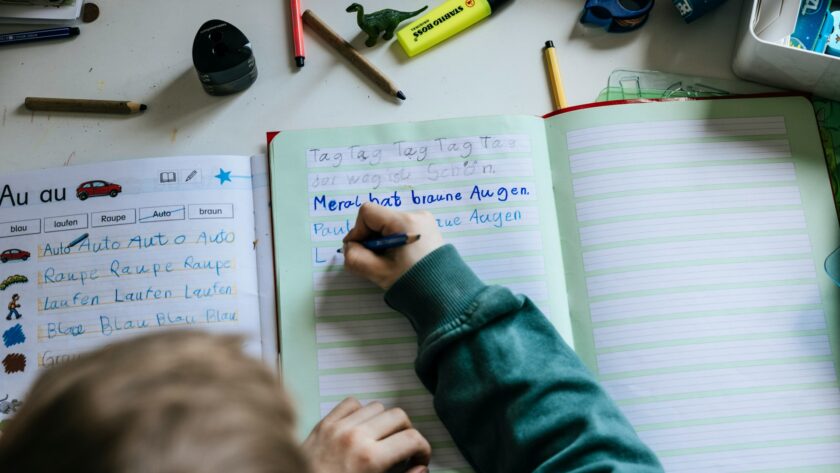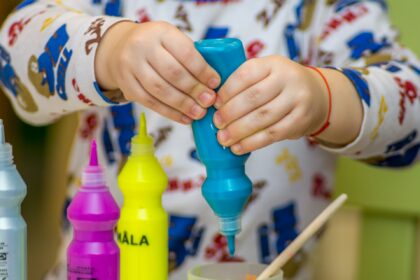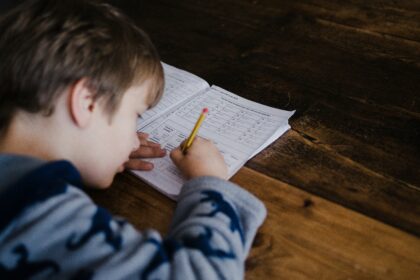Understanding the math skills your child will learn in 1st grade is crucial for their academic development. These foundational skills not only support future mathematical learning but also enhance problem-solving and logical thinking abilities. First grade is a significant year as children transition from basic counting and number recognition to more complex concepts such as addition, subtraction, place value, measurement, and geometry. As a parent, being aware of what your child will learn and how to support them at home can make a significant difference in their educational journey.
Counting and Cardinality
Counting and cardinality form the cornerstone of early math education. In first grade, children build on their kindergarten counting skills by learning to count forward and backward from any given number within 120. They also practice one-to-one correspondence, ensuring that each object counted is matched with one and only one number name. This skill is essential for developing a strong number sense. To support your child, engage them in activities such as counting everyday items like toys, snacks, or steps. Utilize number lines, counting charts, and interactive games that make counting fun and engaging. For instance, playing games that require counting moves or objects can reinforce these skills in an enjoyable way. Encouraging your child to count aloud and in different sequences (e.g., by twos, fives, tens) can also enhance their understanding of number patterns and sequences, which are critical for their mathematical development.
Tips for Practicing at Home:
- Counting Everyday Items: Engage your child in counting objects around the house, like toys, snacks, or steps.
- Use Number Lines and Charts: Display a number line or chart in a common area and practice counting together.
- Interactive Games: Play counting games such as “Counting Around the House” or digital apps that make counting fun and interactive.
Basic Addition and Subtraction
First grade marks the beginning of formal addition and subtraction education. Children learn to solve addition and subtraction problems within 20 using various strategies such as counting on, making ten, and using number bonds. Understanding the relationship between addition and subtraction is emphasized, helping children see how these operations are interconnected. To support your child, incorporate practical activities like using objects (e.g., counters, blocks) to visualize addition and subtraction problems. Story problems, where children use addition and subtraction to solve real-life scenarios, can make learning more relevant and engaging. Additionally, interactive online games and apps designed to practice these skills can provide a fun and effective way for children to improve their fluency in addition and subtraction. Encouraging regular practice through these engaging methods will help solidify their understanding and proficiency in basic arithmetic.
Tips for Practicing at Home:
- Manipulatives: Use everyday items like beans or buttons to create addition and subtraction problems.
- Story Problems: Create simple story problems together that involve adding or subtracting objects.
- Educational Apps and Games: Utilize math apps that offer addition and subtraction practice through engaging activities.
Place Value and Number Sense
Understanding place value is a critical milestone in first-grade math. Children learn to recognize the value of digits in two-digit numbers, understanding that the number 23, for example, represents 2 tens and 3 ones. This concept is foundational for more complex arithmetic and helps children develop a deeper understanding of numbers. To support your child’s learning, use visual aids such as base-ten blocks or place value charts. Engage in activities that involve grouping objects into tens and ones to reinforce the concept. Playing games that involve creating and decomposing numbers can also be beneficial. For instance, you can use everyday items like beans or buttons to create groups of ten and then count the remaining ones. Such hands-on activities make abstract concepts more tangible and easier to grasp, setting a strong foundation for future mathematical learning.
Tips for Practicing at Home:
- Visual Aids: Use base-ten blocks or draw place value charts to visualize tens and ones.
- Grouping Objects: Group household items into sets of tens and ones to reinforce the concept.
- Number Games: Play games that involve creating and decomposing numbers, such as “Build a Number” with blocks or cards.
Measurement and Data
In first grade, children begin to explore measurement and data, learning to measure lengths using non-standard units such as paper clips or blocks before transitioning to standard units like inches and centimeters. They also learn to compare and order objects based on length, weight, and capacity. Additionally, children are introduced to simple data collection and representation through charts and graphs. To support your child, involve them in everyday measurement activities.
For example, you can measure ingredients while cooking, compare the heights of different family members, or create simple bar graphs to track daily activities. These practical applications help children understand the relevance of measurement and data in their daily lives. Encouraging curiosity and making measurement a part of everyday conversations can significantly enhance their understanding and interest in this area of math.
Tips for Practicing at Home:
- Cooking and Baking: Measure ingredients together while cooking or baking.
- Height Comparisons: Compare the heights of family members or favorite toys.
- Simple Graphs: Create bar graphs or tally charts to track daily activities or preferences.
Geometry
First graders are introduced to the basics of geometry, learning to recognize, name, and describe various shapes such as circles, triangles, squares, and rectangles. They also explore the properties of these shapes, such as the number of sides and corners. Additionally, children begin to understand the concept of composing and decomposing shapes, which lays the groundwork for more advanced geometric concepts. To support your child’s geometric learning, engage in activities that involve drawing, building, and identifying shapes. Use household items to create and explore different shapes, or play games that involve sorting objects based on their shapes. Encouraging your child to describe the shapes they see around them helps reinforce their understanding of geometric properties and vocabulary. These activities make learning geometry fun and relevant, enhancing their spatial awareness and problem-solving skills.
Tips for Practicing at Home:
- Shape Hunts: Go on a shape hunt around the house or neighborhood, identifying and naming different shapes.
- Drawing and Building: Encourage drawing shapes or using building blocks to create shapes.
- Sorting Games: Sort household items by shape to reinforce geometric properties.
Time and Money
Learning to tell time and understand money are practical skills introduced in first grade. Children learn to read analog clocks, focusing on the hour and half-hour marks, and begin to understand the concepts of time intervals. They also learn to identify coins and their values, understanding how to count and make simple transactions. To support your child’s learning, practice reading clocks together and discuss daily routines in terms of time. Use play money or real coins to set up a small “store” at home where your child can practice making purchases and giving change. These activities provide a hands-on approach to learning time and money, making the concepts more concrete and applicable to real life. Regular practice and engagement with these everyday skills help children build confidence and proficiency, preparing them for more complex financial literacy in the future.
Tips for Practicing at Home:
- Clock Practice: Use an analog clock at home to practice telling time together.
- Daily Routines: Discuss daily routines in terms of time to reinforce the concept.
- Play Store: Set up a small store with play money or real coins to practice making purchases and giving change.
Engaging Math Games and Interactive Learning
Making math fun and engaging is crucial for maintaining your child’s interest and enthusiasm. Incorporating math games and interactive activities into their daily routine can significantly enhance their learning experience. Board games that involve counting, addition, and subtraction, such as “Chutes and Ladders” or “Monopoly Junior,” can provide enjoyable practice. Online math games and educational apps offer interactive and adaptive learning experiences that cater to your child’s individual needs. Additionally, simple activities like a “shape scavenger hunt” around the house or using a number line hopscotch can make learning more dynamic and engaging. These games not only reinforce math skills but also develop critical thinking and problem-solving abilities. Encouraging a playful approach to math helps children associate learning with fun, fostering a positive attitude towards mathematics and building a strong foundation for future success.
Tips for Practicing at Home:
- Board Games: Play board games that involve counting, addition, and subtraction.
- Interactive Apps: Use educational apps that offer interactive math activities.
- Creative Activities: Organize activities like a shape scavenger hunt or number line hopscotch.
First grade is a pivotal year for developing essential math skills that lay the foundation for future academic success. By understanding and supporting your child’s learning journey in areas such as counting, addition, subtraction, place value, measurement, geometry, time, and money, you can make a significant impact on their mathematical development. Engaging in practical activities, games, and real-life applications helps reinforce these concepts and makes learning enjoyable. As a parent, your involvement and encouragement are key to helping your child build confidence and proficiency in math, setting them up for continued success in their educational journey.





